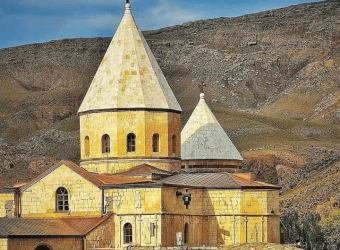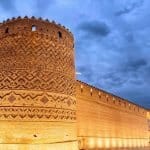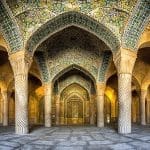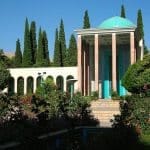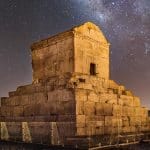Armenian Monastic Ensembles of Iran
Tucked into the scenic northwest highlands of Iran lie three extraordinary monastic ensembles that tell a story centuries in the making. Listed by UNESCO in 2008, the Armenian Monastic Ensembles of Iran bring together St. Thaddeus Monastery, St. Stepanos Monastery, and the Chapel of Dzordzor — architectural treasures that span from the 7th to the 16th centuries.
These sacred complexes reflect the rich traditions of Armenian Christian architecture and decoration, combining stone masonry, ornate carvings, and design elements shaped by long interaction with Byzantine, Persian, and other regional cultures.
What makes them especially remarkable is their dual nature:
Historical heritage: They preserve evidence from ancient times of Christian faith and Armenian cultural life in a region that has seen many changes.
Living pilgrimage sites: Even today, people journey to these monasteries — especially St. Thaddeus — to take part in religious festivals and spiritual traditions that continue through the centuries.
Among the ensemble’s more notable sites are:
Monastery of St. Thaddeus (Qara Kelisa) — the oldest of the group, with roots in the 7th century.
Monastery of St. Stepanos — perched in a dramatic canyon near the Aras River, a masterpiece of religious architecture with cliffside views and centuries of history.
Chapel of Dzordzor — small but historically important, reconstructed and preserved with care, even relocated due to changes in the landscape.
And smaller associated structures such as the Chupan Chapel (a pastoral chapel for shepherds), churches in Darresham village, and the various components of the ensembles that give this site its texture and depth.
Together, these ensembles form one of the last well-preserved testimonies of Armenian Christian culture in this borderland region — architectural gems and spiritual spaces that connect past and present in stone, ritual, and community.
Located in the northwest of Iran, the Armenian Monastic Ensembles consist of three historic sites: St. Thaddeus Monastery, St. Stepanos Monastery, and the Chapel of Dzordzor. These sites are situated in the provinces of East and West Azerbaijan.
1. St. Thaddeus Monastery (Qara Kelisa)
Location: Approximately 18 km from Maku, West Azerbaijan Province.
Access:
By Car: From Maku, take Route 16 westward.
By Public Transport: Buses and shared taxis operate between Maku and Chaldoran.
By Air: The nearest airport is Maku International Airport (IATA: IMQ), located about 40 km southeast of Maku. This airport offers domestic flights, including a non-stop route to Tehran.
By Train: The nearest major train station is in Tabriz. From Tabriz, you can take a bus or taxi to Maku, which is approximately 3 hours away.
2. St. Stepanos Monastery
Location: About 17 km west of Jolfa, East Azerbaijan Province.
Access:
By Car: From Jolfa, follow Route 16 westward.
By Public Transport: Buses and shared taxis are available from Jolfa to the monastery.
By Air: The nearest major airport is Tabriz International Airport (IATA: TBZ), approximately 140 km south of Jolfa. From Tabriz, you can take a bus or taxi to Jolfa.
By Train: Jolfa is connected to Tabriz by the Jolfa–Tabriz railway, which is Iran’s only electric train route. Trains run regularly between the two cities, with a journey time of about 3 hours
3. Chapel of Dzordzor
Location: Near the village of Baroon, Maku County, West Azerbaijan Province.
Access:
By Car: From Maku, take Route 16 westward and follow the signs to Baroon.
By Public Transport: Shared taxis operate between Maku and Baroon.
By Air: Maku International Airport (IATA: IMQ) is the nearest airport, located about 40 km southeast of Maku. This airport offers domestic flights, including a non-stop route to Tehran
By Train: The nearest major train station is in Tabriz. From Tabriz, you can take a bus or taxi to Maku, which is approximately 3 hours away.
The Armenian Monastic Ensembles of Iran, comprising St. Thaddeus Monastery, St. Stepanos Monastery, and the Chapel of Dzordzor, are best visited during spring (April to June) and autumn (September to October). These seasons offer mild temperatures and pleasant weather, ideal for exploring the historic monasteries and enjoying the surrounding natural landscapes.
Spring (April – June):
The mountains and valleys around the monasteries bloom with wildflowers, creating a stunning backdrop for photography and exploration. Spring is also ideal for cultural visits, as the weather is comfortable and tourist crowds are moderate.Summer (July – August):
Summer can be warm, especially in Maku and Jolfa. However, early morning or late afternoon visits can still be pleasant. The annual pilgrimage at St. Thaddeus Monastery, held in late July, is a unique cultural event if you wish to experience local traditions.Autumn (September – October):
Fall is one of the most scenic times to visit, with colorful foliage adding charm to the historic sites. Temperatures are cooler than summer, making walking and sightseeing more enjoyable.Winter (November – March):
Winter can be cold and snowy, especially in the West Azerbaijan region. Access to some sites may be limited, and roads may be challenging. Winter visits are recommended only for experienced travelers prepared for cold weather.
Tip for Visitors:
Plan your visit during weekdays if possible, as weekends and festival periods can be crowded, particularly at St. Thaddeus Monastery during the annual pilgrimage.
